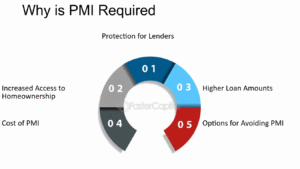
How to Qualify for a Green Auto Loan:
With electric vehicles (EVs) and hybrids becoming more affordable and accessible, many Americans are exploring green auto loans to finance their eco-friendly rides. These loans, designed to support low-emission vehicle purchases, often come with appealing perks like lower interest rates and flexible terms. But how do you qualify for one?
In this in-depth guide, we’ll walk you through the complete process of qualifying for a green auto loan—from understanding eligibility requirements to improving your chances of approval. Whether you’re shopping for your first electric car or upgrading to a plug-in hybrid, this blog is your roadmap to securing sustainable, smart financing.
1. Understand What Constitutes a “Green” Vehicle
Before applying, it’s important to know which types of vehicles are eligible for green auto loans. Most lenders will only approve financing for cars that meet certain environmental standards. Eligible vehicles typically include:
- Fully electric vehicles (EVs)
- Plug-in hybrid electric vehicles (PHEVs)
- Hydrogen fuel cell vehicles
- High-efficiency gas vehicles (often 35 MPG or more)
Pro Tip: Check with your preferred lender or use vehicle eligibility tools provided by Bankrate or CreditKarma to confirm your car qualifies.
2. Check Your Credit Score
Green auto loans may come with favorable terms, but your credit score still plays a crucial role in determining approval and your interest rate. Most green loan programs expect a credit score of 660 or above, though some credit unions or green-friendly lenders may consider applicants with lower scores.
To improve your chances:
- Pay down outstanding credit card balances
- Avoid applying for new credit before your loan application
- Check your report for errors and dispute inaccuracies
Use CreditKarma to access your credit profile for free before applying.
3. Compare Lenders Who Offer Green Auto Loans
Not every lender offers a green auto loan product, so it’s essential to find one that specializes in eco-financing. Consider these lender types:
- Credit Unions (e.g., Navy Federal, Clean Energy CU)
- Online Banks (e.g., LightStream, LendingTree)
- Local Banks with Sustainability Programs
- EV Manufacturer Financing (e.g., Tesla Financing)
Use comparison tools like Bankrate, NerdWallet, or CreditKarma to explore loan options and shop around for the best APR.
4. Gather Required Documents
Just like a traditional auto loan, you’ll need to gather essential documents to complete your application. These usually include:
- Government-issued ID
- Proof of income (pay stubs or tax returns)
- Employment verification
- Proof of insurance
- Vehicle purchase agreement or invoice
Pro Tip: Having pre-approval from a lender before visiting the dealership strengthens your bargaining power.
5. Consider Pre-Approval
Pre-approval helps you understand how much you can borrow and at what rate—without a hard credit check in most cases. It also gives you a better idea of your budget, ensuring you shop within your financial comfort zone.
Pre-approval doesn’t lock you in but gives you a head start with the paperwork. It also allows you to compare actual interest rates from different lenders side-by-side.
6. Evaluate Additional Perks and Incentives
Many green auto loan programs come with bonus incentives that go beyond low interest rates. Look for:
- Cash-back offers or rebates
- Federal and state tax incentives (e.g., $7,500 federal tax credit)
- Bundled offers with solar panels or EV chargers
- Lower insurance premiums for EVs and hybrids
Lenders like DreamDen partners may even help you secure discounts on home energy upgrades alongside your green car purchase.
7. Watch Out for Fees and Restrictions
Not all green loans are created equal. While they offer advantages, make sure to review the fine print:
- Early repayment penalties
- Origination or processing fees
- Minimum or maximum loan amounts
- Vehicle mileage restrictions
Compare APR—not just interest rate—since it includes fees and gives a more accurate total cost.
8. Improve Your Debt-to-Income (DTI) Ratio
Your DTI ratio measures how much of your monthly income goes toward debt. A lower DTI increases your chance of approval. To improve your DTI:
- Pay down existing loans
- Avoid large new financial commitments before applying
- Increase income if possible (e.g., freelance work)
Most lenders prefer a DTI under 36%.
9. Look into Joint Applications or Co-Signers
If your credit or income isn’t quite where it needs to be, applying with a co-signer or co-borrower can boost your odds. This person should have good credit and stable income.
Some lenders also offer green family loan programs for couples or households transitioning to cleaner transportation.
10. Work with a Sustainability-Focused Consultant
Navigating the green auto financing landscape can be complex. That’s why working with a consultant like DreamDen can make all the difference. At DreamDen, we help eco-conscious consumers:
- Identify qualifying vehicles and lenders
- Optimize credit and finances pre-application
- Bundle green financing with home efficiency upgrades
- Design EV-friendly homes with charging stations and solar integrations
We make going green simple, stylish, and financially sound.
Conclusion
Qualifying for a green auto loan is about more than just having good credit—it’s about choosing the right vehicle, working with the right lender, and taking advantage of the eco-incentives available to you.
By following these steps, you can improve your chances of approval while reducing your vehicle’s carbon footprint. With DreamDen by your side, your journey toward sustainable living is not just easier—it’s designed to elevate your lifestyle in every way.
Ready to finance your next green ride? Let DreamDen guide you through every step of the process.




